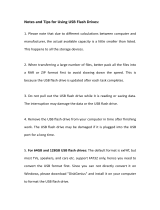
4
Using the Presentation Timer (TIMER) .................................................23
To display the timer ................................................................................................. 23
To display the timer function menu .......................................................................... 23
To configure timer settings....................................................................................... 24
To start a countdown timer operation ...................................................................... 24
To pause the timer countdown ................................................................................ 25
To resume a paused timer countdown..................................................................... 25
To reset the timer to its start time ............................................................................ 25
Using the Setup Menu (MENU) ............................................................26
Basic Setup Menu Operations................................................................................... 26
Setup Menu Settings ................................................................................................. 27
Password Protection ............................................................................32
Using the Password Feature...................................................................................... 32
To change the password ......................................................................................... 33
To change the power on password setting .............................................................. 34
To change the projector internal storage function password
(network models only).............................................................................................. 34
Control Panel Lock (XJ-F Series Only) .................................................35
To lock the control panel ......................................................................................... 35
To unlock the control panel...................................................................................... 35
Projecting from Built-in Memory or USB Input
(Network Models Only) ................................................. 36
Projecting with File Viewer ...................................................................36
File Viewer Overview.................................................................................................. 36
Projecting Files Located in Projector Internal Memory.............................................. 37
To copy files from a computer to projector internal memory..................................... 37
Starting Projection of Files Located in Projector Internal Memory ............................. 39
To format projector internal memory (Windows users only) ...................................... 40
Projecting Files from a Memory Device Connected by USB..................................... 41
To connect a USB flash drive to the projector.......................................................... 41
To connect a memory card to the projector............................................................. 41
To connect a digital camera to the projector ............................................................ 42
To start projection of files that are on a memory device connected via USB............. 42
Projecting Files .......................................................................................................... 45
To project a presentation file.................................................................................... 45
To project a PDF file ................................................................................................ 46
To project an image file............................................................................................ 47
To project a movie file.............................................................................................. 47




















